Unveiling Common Horror Story Plot Structures, this exploration delves into the recurring patterns that define the genre. From the descent into madness to the chilling presence of the unseen enemy, these recurring themes shape the narrative fabric of horror, captivating audiences and eliciting profound emotional responses. Classic horror films and literature often employ these structures to create intense suspense and fear, and understanding these patterns can illuminate the power of storytelling in the genre.
This deep dive into the structure of horror stories examines the fundamental elements that drive fear and suspense. We will explore the psychological and thematic underpinnings of these common plot devices, and how they contribute to the overall impact of the narrative. Analyzing examples from famous horror films and literature will further illustrate how these structures are utilized to craft truly terrifying experiences.
Introduction to Common Horror Story Structures: Common Horror Story Plot Structures
Horror, a genre steeped in the primal fears of humanity, relies heavily on recurring plot structures to evoke a potent response in its audience. These patterns, honed over decades of storytelling, tap into anxieties and expectations, shaping the very fabric of the genre’s impact. From the insidious dread of the unknown to the visceral terror of the tangible, these structures serve as a roadmap for crafting chilling narratives.
These recurring patterns are not simply arbitrary conventions; they are essential to the genre’s ability to tap into our deepest fears. Understanding these structures allows us to appreciate the craft of horror masters, from the meticulous build-up of suspense in a classic slasher film to the subtle dread of a psychological thriller. These structures are also vital to the audience experience, as they create a framework within which we can anticipate and react to the narrative’s unfolding events.
Recurring Plot Structures in Horror
The horror genre consistently employs a few core plot structures, each serving to cultivate a specific type of fear or dread. These structures provide a framework for crafting chilling narratives, ensuring that the audience’s emotional response aligns with the intended effect.
- The Haunted House: This structure typically involves a seemingly ordinary house or location that harbors a supernatural or malevolent entity. The story unfolds as characters venture into the house, encountering progressively terrifying events, often with a growing sense of isolation and helplessness. This structure thrives on atmosphere, isolation, and the tangible manifestation of fear. Think of the iconic “The Haunting of Hill House,” where the unsettling atmosphere and gradual descent into madness are paramount.
- The Descent into Madness: This narrative arc follows a protagonist’s descent into psychological turmoil, often triggered by a traumatic event or an external force. The protagonist’s sanity deteriorates as they confront their deepest fears, leading to increasingly disturbing and violent actions. This structure emphasizes the vulnerability of the human mind and the chilling implications of unchecked trauma. “The Silence of the Lambs” showcases this structure masterfully, with Clarice Starling facing escalating psychological challenges while pursuing a serial killer.
- The Slasher Film: This structure focuses on a relentless, often masked killer who targets a specific group of individuals. The film thrives on the element of suspense, creating a pervasive sense of vulnerability and the constant threat of violence. The structure relies on jump scares, graphic imagery, and the palpable fear of the unknown assailant. Examples include the Friday the 13th series, where the constant threat of a masked killer instills fear in the characters and the audience alike.
Comparative Analysis of Horror Plot Structures
This table Artikels the key characteristics of some common horror plot structures:
| Structure Name | Brief Description | Example |
|---|---|---|
| Haunted House | Characters encounter supernatural or malevolent entities in a house or location, experiencing escalating terror and isolation. | “The Conjuring,” “The Haunting of Bly Manor” |
| Descent into Madness | A protagonist’s psychological state deteriorates due to trauma or external forces, culminating in disturbing actions. | “The Shining,” “Psycho” |
| Slasher Film | A relentless killer targets a group of individuals, creating a pervasive sense of vulnerability and violence. | “Halloween,” “Friday the 13th” |
| Psychological Thriller | Focuses on the manipulation of a protagonist’s mind, leading to unsettling discoveries and a gradual unraveling of reality. | “The Silence of the Lambs,” “The Others” |
The Descent into Madness
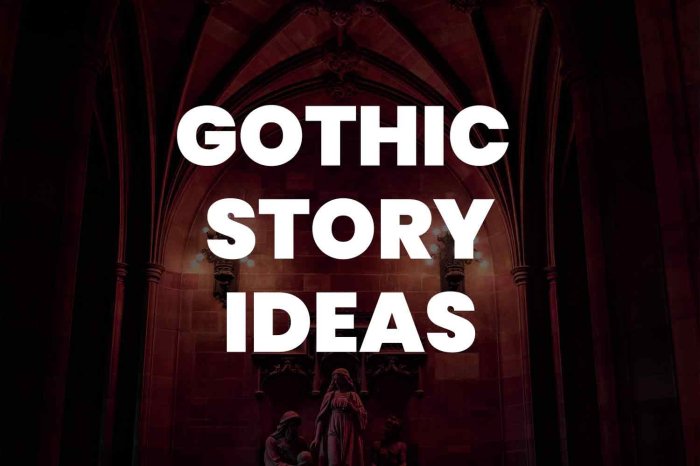
The descent into madness, a potent horror trope, delves into the psychological fray of a character, unraveling their sanity bit by agonizing bit. This narrative structure taps into primal fears of losing control, of one’s own mind becoming a terrifying, unpredictable entity. It’s a chilling exploration of the fragility of the human psyche and the insidious ways in which the world around us can erode our sense of self.
This plotline centers on the gradual disintegration of a character’s mental state, often fueled by external factors like trauma, isolation, or supernatural influences. The narrative meticulously chronicles this deterioration, highlighting the subtle shifts in perception, behavior, and thought processes that mark the character’s descent. This descent isn’t a sudden collapse but a slow, agonizing unraveling, building suspense and dread as the character’s grip on reality weakens.
Methods of Portraying the Descent
The narrative effectively utilizes specific techniques to showcase the character’s unraveling. Flashbacks, often fragmented and distorted, provide glimpses into past traumas or events that contributed to the character’s current state. Hallucinations, increasingly vivid and disturbing, become a terrifying reality for the character, blurring the line between the real and imagined. Paranoia, a creeping sense of unease and suspicion, isolates the character from others, fostering an ever-deepening sense of dread. These techniques effectively amplify the sense of dread and isolation, creating a suffocating atmosphere of unease.
Forms of the Descent
The descent into madness can manifest in various ways, each with its unique terrors. Isolation, a pervasive element in this structure, can be physical or psychological, forcing the character into a world of paranoia and delusion. Trauma, a potent catalyst, can be a singular event or a series of cumulative experiences that chip away at the character’s mental fortitude. Supernatural influences, from curses to possession, can act as an external force driving the character into madness, manipulating their thoughts and actions.
Progression of Madness in Elias Thorne
| Time | Event | Mental State |
|---|---|---|
| Early 20s | Loss of a loved one in a tragic accident | Grief-stricken, withdrawn, experiencing vivid nightmares. |
| Mid 20s | Moves to a remote cabin for isolation | Increasingly isolated, begins experiencing fragmented flashbacks, and heightened anxiety. |
| Late 20s | Exposure to strange occurrences in the cabin; unsettling whispers and shadows. | Paranoia sets in, questioning the reality of his experiences. Hallucinations become more frequent and disturbing. |
| 30s | Strange rituals and objects begin appearing in the cabin. | Deeply paranoid, convinced he is being watched or targeted. Believes he is losing his mind. |
| 40s | Believes he is being driven mad by a malevolent entity. | Completely unhinged, acting erratically, and hallucinating with disturbing clarity. |
The Haunted House/Location
The haunted house, a cornerstone of horror, transcends mere structure. It embodies the primal fear of the unknown, a place where the veil between reality and nightmare thins. More than just a building, it becomes a microcosm of the anxieties that haunt us, reflecting our deepest fears of isolation, confinement, and the lurking presence of something beyond comprehension. Its very existence embodies the idea that dread can be amplified by a suitable setting, and that isolation and confinement can breed monstrous realities.
A haunted location, whether a crumbling mansion or a secluded forest, acts as a powerful catalyst for fear. The atmosphere, sounds, and visuals work in concert to create a pervasive sense of dread, transforming the ordinary into the terrifying. The setting’s isolation and confinement, combined with an unsettling sense of dread, are potent ingredients in the horror experience.
Examples of Haunted Locations in Horror
Haunted locations are frequently employed to amplify fear and suspense in horror stories. The decaying mansion, often shrouded in mystery and filled with dark secrets, is a classic example. Shirley Jackson’s “The Haunting of Hill House” and numerous gothic novels utilize this trope. The oppressive atmosphere and decaying grandeur of the house become symbolic of the characters’ inner turmoil and descent into madness. Similarly, a secluded forest, with its shadows and whispers, can symbolize the unknown and the encroaching darkness, as seen in Stephen King’s “The Shining”. The oppressive, isolated environment amplifies the fear and makes the characters’ struggles more impactful.
The Role of Setting in Amplifying Fear and Suspense
The setting, more than just a backdrop, becomes an active participant in the horror. A claustrophobic, dimly lit hallway can heighten the feeling of unease, while a howling wind through the skeletal branches of a forest can evoke a sense of impending doom. The details of the setting, from the rustle of leaves to the creak of floorboards, are not just descriptions; they are instruments of fear, adding layers of suspense and anxiety to the narrative. The unsettling nature of the location is more than just visual. The feeling of being watched, of being trapped, is profoundly amplified by the surroundings.
Isolation and Confinement in Horror
Isolation and confinement are crucial elements in horror narratives, driving characters into a state of vulnerability and desperation. A trapped character, alone in a decaying mansion, is far more susceptible to fear and terror than one surrounded by company. This isolation amplifies the sense of helplessness and the dread of the unknown. Similarly, the confinement within a cramped, shadowed space intensifies the experience of fear, isolating the individual from the outside world and allowing the horror to fester.
Different Types of Haunted Locations
Haunted locations are diverse, reflecting different anxieties and fears. A decrepit mansion, with its crumbling walls and spectral inhabitants, evokes a sense of decaying grandeur and the weight of history. A secluded forest, with its dense canopy and eerie silence, symbolizes the unknown and the encroaching darkness. A deserted town, abandoned and haunted by a forgotten tragedy, conjures images of isolation and despair. Each setting, in its unique way, becomes a vessel for the horror.
| Location Type | Associated Fears | Example |
|---|---|---|
| Decrepit Mansion | Decay, secrets, history | “The Haunting of Hill House” |
| Secluded Forest | The unknown, encroaching darkness, isolation | “The Shining” |
| Deserted Town | Isolation, despair, forgotten tragedy | “The Mist” |
A Detailed Description of a Haunted Location
The Blackwood Manor, a sprawling edifice of grey stone, stands sentinel atop a windswept hill. Its windows, like vacant eyes, stare out at the world, reflecting the swirling mists that perpetually shroud the surrounding forest. A chilling, almost tangible, silence permeates the air, broken only by the mournful creak of rotting timbers and the distant howl of a wolf. Dust motes dance in the single shaft of moonlight piercing the gloom, illuminating cobwebs that hang like macabre tapestries. The air itself seems thick with the scent of decay and something else… something indefinably sinister. The faintest whisper echoes through the empty halls, a phantom voice murmuring secrets only the house seems to remember. A chill, deeper than any winter wind, crawls up your spine.
The Supernatural Threat
The supernatural realm, a canvas of shadows and whispers, holds a unique place in horror. It taps into primal fears, anxieties about the unknown, and the unsettling possibility that forces beyond our comprehension exist. This exploration delves into the varied forms of these entities, their motivations, and the methods employed to portray them in narratives.
The supernatural threat isn’t merely a plot device; it’s a potent catalyst for fear, mystery, and the unraveling of the human psyche. It forces characters and audiences into a confrontation with the unknown, the terrifying possibility that the world isn’t as predictable or safe as it seems.
Forms of Supernatural Entities
The supernatural isn’t monolithic. It encompasses a spectrum of entities, each with its own unique characteristics and motivations. From vengeful spirits to malevolent demons, each type possesses a distinct method of terrorizing its victims. Understanding these differences is crucial to comprehending the various ways the supernatural can be terrifying.
Motivations of Supernatural Entities
The motivations behind supernatural threats vary significantly. A vengeful ghost might seek retribution for a past transgression, while a malevolent demon might pursue power or chaos. These motivations are often woven into the narrative, providing context and a rationale for the entity’s actions. A deep understanding of the motivation can greatly enhance the impact of the narrative, illuminating the entity’s purpose and its potential for harm.
Portrayal of Supernatural Threats
Horror often employs specific methods to depict these supernatural entities. Vivid descriptions, unsettling sounds, and chilling actions are used to evoke a sense of dread and apprehension. For example, a creeping shadow might signify the approach of a malevolent entity, while guttural moans could indicate a spectral presence.
Examples of Supernatural Threats and Their Portrayals
- Ghosts: Often depicted through ethereal figures, pale apparitions, or disembodied voices. Their actions might include unsettling whispers, cold drafts, or objects moving on their own. The haunting atmosphere and lingering sense of dread are key elements in portraying the presence of a vengeful spirit.
- Demons: Frequently portrayed as grotesque and monstrous figures with dark, unsettling features. Their actions may include violent attacks, possession, or the spreading of corruption. The sheer horror of their presence and their ability to corrupt the innocent is a powerful tool for eliciting fear.
- Monsters: Often described with grotesque appearances, unnatural strength, and frightening abilities. They might use their physical prowess to instill fear, or their unnatural powers to cause chaos and destruction. The visual depiction of the monster, coupled with its actions, creates a visceral and intense experience of terror.
Comparison and Contrast of Supernatural Forces
While each supernatural entity can evoke fear, their methods and motivations differ. A ghost might subtly prey on the psychological vulnerability of the victim, whereas a demon might act with blatant malice. Understanding these distinctions allows for a deeper appreciation of the complexity and variety within the supernatural realm. This comparison allows for a deeper understanding of how each entity utilizes its unique strengths to terrorize and instill dread.
Table of Supernatural Threats
| Type of Threat | Characteristics | Methods of Portrayal |
|---|---|---|
| Ghosts | Vengeful spirits, often connected to a specific location or event. | Ethereal figures, cold drafts, disembodied voices, moving objects. |
| Demons | Malevolent entities seeking power or chaos, often associated with darkness and corruption. | Grotesque appearances, violent actions, possession, spreading corruption. |
| Monsters | Creatures with unnatural abilities and often grotesque features. | Visually disturbing appearances, violent attacks, unnatural strength, causing chaos and destruction. |
The Unseen Enemy
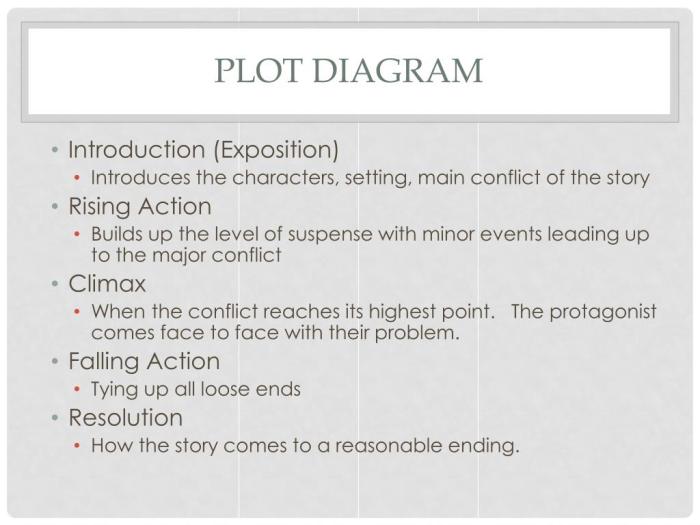
The unseen enemy in horror narratives taps into a primal fear: the unknown lurking just beyond our perception. This insidious plot structure thrives on the unsettling feeling of vulnerability, where the threat is not a tangible monster but a pervasive, intangible force. This uncertainty breeds a relentless dread, as the characters are trapped in a constant state of unease, never truly safe.
The very nature of the unseen enemy fosters a potent cocktail of suspense and anxiety. The absence of visual confirmation fuels a constant, gnawing fear. The mind, left to conjure its own terrors, often creates more disturbing images than any physical manifestation could.
The Generation of Dread
The unseen enemy creates an atmosphere of paranoia and constant vigilance. Characters are forever on edge, suspecting the worst, even when there is no immediate threat. This sustained tension keeps the audience, and the characters, on the precipice of fear. The fear is amplified by the uncertainty; the characters are not only afraid of what *might* happen, but also of what they *cannot* see.
Suspense and Uncertainty, Common horror story plot structures
This plot structure thrives on the building suspense generated by the unknown. Each subtle shift in atmosphere, each unexplained noise, each lingering shadow, becomes a potential manifestation of the unseen threat. The characters, and the audience, are forced to piece together clues, creating a narrative of speculation and dread. This constant questioning and interpretation are key to the escalating anxiety. The uncertainty amplifies the terror, as the characters are never truly safe, their perceptions and senses becoming unreliable.
The Amplification of Fear
The unseen nature of the threat is paramount to the fear factor. The lack of physical form allows the antagonist to be everywhere and nowhere at once. The fear is no longer about a creature to be fought, but about an entity that can permeate the very fabric of existence. The mind, deprived of concrete visualisations, fills in the gaps with the most horrifying possibilities. The horror lies not just in the fear of the unknown, but in the chilling realization that the unknown might be inside them.
Examples of the Unseen Threat
Numerous horror films, novels, and stories have used this technique. In Stephen King’s *The Shining*, the Overlook Hotel’s unsettling atmosphere and the presence of an unseen malevolent force are a perfect illustration of this concept. The unseen entities of *The Conjuring* universe operate similarly. The fear is not just from the unseen supernatural, but from the characters’ increasingly fragile sanity and the terrifying possibility of the unknown that permeates their reality.
Developing the Unseen Antagonist
Developing an unseen enemy requires a clever balance. Limited information about the antagonist is crucial. Focus on creating a sense of dread rather than providing a detailed description. Hints, whispers, and unexplained occurrences can establish the presence of the unseen threat without revealing its true nature. This ambiguity allows the audience to project their own fears and anxieties onto the unknown entity, making the experience even more terrifying. For example, a recurring, unsettling noise or a chilling whisper in the dark, repeated in a specific pattern, can evoke a profound sense of dread without revealing the source. The nature of the threat remains a mystery, fueling the tension and anxiety.
The Monster/Creature Feature
The monster, a figure of primal fear and unimaginable horror, has captivated audiences for centuries. From the shadowy depths of folklore to the meticulously crafted creatures of cinema, the monster serves as a potent symbol of the anxieties and terrors that lie just beyond the veil of reality. Its presence embodies the unknown, the grotesque, and the utterly terrifying, forcing us to confront our deepest fears and question the very nature of our existence.
Monsters, in their various forms, are powerful vehicles for exploring human psychology. They represent the darker aspects of our collective unconscious, manifesting as physical embodiments of our fears, anxieties, and societal taboos. These creatures are not merely decorative elements; they are essential components of the narrative, provoking visceral reactions and driving the plot forward.
The Role of Monsters in Horror
Monsters are more than just antagonists; they are crucial in driving the narrative forward, often embodying specific fears or anxieties of the time period in which they were created. Their very existence challenges the protagonist’s sanity, strength, and understanding of the world. The monster’s actions and the protagonist’s reactions to them create the core conflict that defines the story. Monsters are instruments of terror, designed to elicit visceral responses, from primal screams to quiet, paralyzing dread.
Characteristics of Various Monsters
The design and characteristics of a monster profoundly affect the narrative. A towering, hulking creature may evoke feelings of overwhelming physical threat, while a shadowy, unseen entity can instill fear through the unknown. A creature with supernatural powers may signify the inability to control fate or destiny, while a monster born from a scientific experiment could symbolize the dangerous potential of unchecked ambition.
- Creatures of the night, like vampires or werewolves, often embody the fear of the unknown and the seductive power of forbidden desires. Their transformations symbolize the loss of control and the descent into darkness.
- Man-made horrors, born from scientific experiments or dark technology, highlight the dangers of unchecked progress and the potential for unintended consequences. These monsters often represent the fear of the unknown and the possibility of losing control of technology.
- Ancient evils, such as ghouls or demons, frequently evoke fear of the supernatural and the power of primordial forces. Their presence often signifies the fragility of human existence in the face of cosmic forces.
Monster Design and Fear Response
The physical attributes of a monster are meticulously crafted to elicit a specific fear response. A creature’s size, shape, and movements all contribute to its impact on the viewer. A monster’s terrifying appearance often reflects the specific fears being explored in the narrative.
- Visually disturbing features, such as sharp teeth, claws, or grotesque deformities, trigger feelings of disgust and revulsion, often linked to the primal fear of the unknown.
- Unnatural movements, or unnatural abilities, can disrupt the viewer’s sense of normalcy and security, triggering a profound sense of unease and vulnerability.
- Sound design, including guttural growls, piercing screams, or unsettling silence, can amplify the monster’s impact and contribute to the overall atmosphere of fear.
Famous Monster Creations and Cultural Significance
Many monster creations have transcended their original narratives, becoming cultural icons. Dracula, Frankenstein’s monster, and the Wolfman, for instance, continue to inspire and influence popular culture. Their enduring popularity stems from their ability to tap into universal fears and anxieties.
- Dracula, with his seductive charm and nocturnal habits, embodies the fear of the seductive unknown and the dangers of unchecked desires.
- Frankenstein’s monster, a creature born from scientific hubris, reflects the dangers of unchecked ambition and the potential for unforeseen consequences.
- The Wolfman, transforming into a beastly form, embodies the fear of losing control and succumbing to primal instincts.
A Unique Monster Creation
Imagine the Abyssal Maw, a creature born from the depths of a forgotten ocean trench. Its form is a colossal, serpentine mass of obsidian scales, its body riddled with glowing, bioluminescent organs that pulse with an unsettling rhythm. Its enormous maw, lined with razor-sharp teeth, is capable of crushing entire vessels.
- Weaknesses: The Abyssal Maw is vulnerable to sonic vibrations, and prolonged exposure to sunlight causes its skin to crack and peel.
- Strengths: Its incredible strength and size allow it to crush and destroy its prey with ease. It is also immune to most conventional weapons.
The Psychological Horror
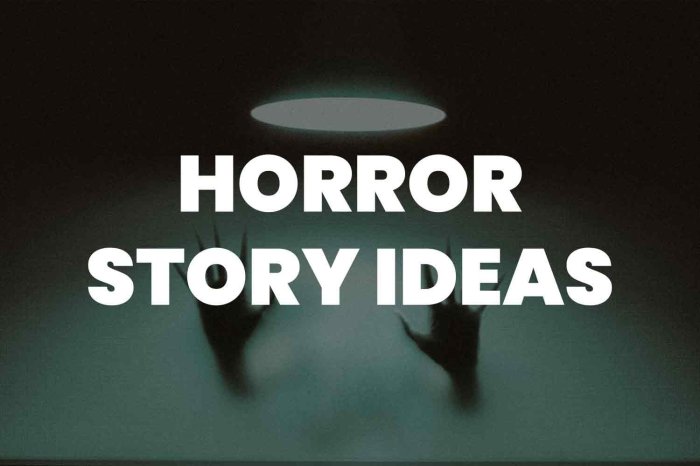
The psychological horror genre delves into the darkest recesses of the human mind, exploiting anxieties and fears that fester within us all. It often eschews external threats, focusing instead on the internal turmoil and the fracturing of sanity. This exploration of the human psyche, its vulnerabilities, and its capacity for both unimaginable cruelty and profound self-destruction creates a profoundly unsettling atmosphere, often leaving the audience more disturbed than terrified by external forces.
This genre thrives on the insidious nature of dread, the slow, creeping sense of unease that builds upon itself, twisting reality into a warped reflection of the protagonist’s deteriorating state of mind. It taps into our primal fears of the unknown, of the things we cannot see or control, but more importantly, the unknown within ourselves.
Psychological Manipulation
Psychological manipulation is the cornerstone of this genre. Stories often employ techniques that exploit the audience’s inherent vulnerabilities, creating a sense of paranoia and mistrust. This is achieved through unreliable narrators, ambiguous events, and environments that mirror the protagonist’s fractured mental state. The audience is forced to question the reality presented, experiencing the same disorientation and anxiety as the protagonist. This creates a powerful sense of immersion and dread, as the line between sanity and madness blurs.
Anxiety and Fear in Psychological Horror
Anxiety and fear play a crucial role in the psychological horror narrative. These emotions are not merely reactions to external threats, but rather reflections of the protagonist’s inner turmoil. The fear of isolation, of losing control, of being misunderstood, and the anxiety stemming from repressed memories and traumas are all potent tools in crafting a disturbing and immersive experience. These feelings are often heightened by the narrative’s focus on subtle shifts in behavior, fragmented memories, and the growing sense of paranoia.
Techniques to Build Suspense and Tension
Several techniques are employed to create suspense and tension in psychological horror narratives. Unreliable narrators, whose perceptions and memories are questionable, sow seeds of doubt and confusion in the audience. Ambiguous events, leaving crucial details unclear, further exacerbate this uncertainty, leaving the audience to piece together fragmented information and interpret the story through the unreliable lens of the protagonist. Furthermore, the environment itself often becomes a reflection of the protagonist’s mental state, escalating the sense of unease and dread. The manipulation of time, with memories jumping or repeating, adds another layer of disorientation and unease, leaving the audience to question the passage of time alongside the protagonist.
Psychological Themes in Horror Stories
- Isolation and Alienation: The sense of isolation and being disconnected from society, often driven by the protagonist’s mental state, creates a palpable sense of vulnerability and fear. The protagonist is increasingly isolated from others and the world, reflecting the anxieties of loneliness and alienation that exist in real life. Examples include characters struggling with schizophrenia, who isolate themselves and are unable to distinguish between their own thoughts and the reality around them.
- Loss of Control: The loss of control over one’s thoughts, actions, or surroundings is a central theme. This often manifests as the protagonist’s mind unraveling, their reality shifting and warping, reflecting the anxiety of losing agency and succumbing to inner demons. This is often illustrated through fragmented memories, paranoia, and hallucinations.
- Repressed Trauma: The haunting effects of repressed memories, traumas, and unresolved conflicts can manifest in disturbing ways. These repressed experiences often emerge as nightmares, flashbacks, or disturbing visions, which create an unsettling and deeply personal horror for the protagonist and audience.
- The Nature of Reality: Psychological horror frequently explores the blurring lines between reality and illusion, pushing the boundaries of what is perceived as real. This ambiguity and uncertainty can be profoundly unsettling, leaving the audience questioning the truth and the validity of their own perceptions. This is achieved by creating disorienting environments and using unreliable narrators to question the very nature of reality.
The Body Horror
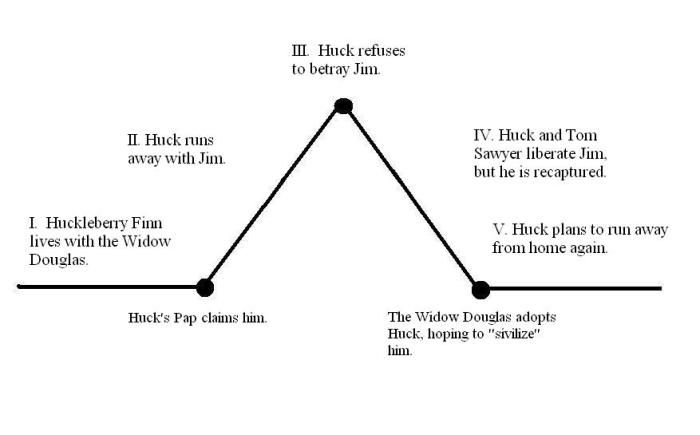
Body horror, a potent force in the horror genre, delves into the grotesque and unsettling transformations of the human form. It taps into primal fears of disfigurement, decay, and the violation of the physical self, creating a visceral and disturbing experience for the audience. It often explores the fragility of the human body and the terrifying potential for its breakdown.
This subgenre of horror transcends the simple fear of the monstrous. Instead, it focuses on the profound revulsion and disgust evoked by the degradation of the human body, often pushing the boundaries of what is considered acceptable or even imaginable. This violation of the physical self triggers deep-seated anxieties about mortality, control, and the very nature of existence.
The Nature of Revulsion
Body horror relies heavily on the creation of revulsion and disgust. These feelings are often triggered by the grotesque and unnatural alterations to the body, including the loss of recognizable anatomical features, the growth of unnatural appendages, and the manifestation of decaying flesh. The visual presentation is crucial; the horrifying imagery aims to unsettle and alienate the viewer, forcing them to confront the unpleasant realities of the body’s potential for corruption and deformity.
Examples in Literature and Film
Body horror has manifested in countless literary and cinematic works. In literature, “The Thing” by John W. Campbell, Jr., showcases a parasitic alien that assimilates its victims, transforming their bodies into horrific, monstrous versions of themselves. In film, “Alien” (1979) and its sequels explore the grotesque and invasive nature of alien parasites, highlighting the violation and corruption of the human form. More recently, films like “The Fly” (1986) and “The Host” (2006) showcase the disturbing consequences of scientific experimentation gone awry, leading to the horrific transformation of the characters’ bodies.
A Scene of Transformation
The flickering fluorescent lights of the lab hummed, casting long, distorted shadows across Dr. Aris Thorne’s gaunt face. A sickly yellow glow emanated from the bubbling, viscous liquid in the Petri dish. Within, the once-smooth, supple flesh of the test subject, a young woman named Anya, was dissolving. Her skin, now a grotesque tapestry of exposed muscle and sinew, pulsed with an unsettling rhythm. Her limbs, once delicate, twisted and contorted, now resembled grotesque, clawed appendages. A grotesque network of blood vessels, like gnarled, dark vines, snaked across her flesh, pulsing with an unnatural life. Anya’s eyes, once filled with a vibrant life, now glowed with an eerie, luminescent green. Her once-human form was dissolving into something beyond recognition, a horrifying testament to the relentless march of corruption and decay. A cold, metallic stench, reminiscent of rotting flesh and burnt metal, filled the air.
Conclusion
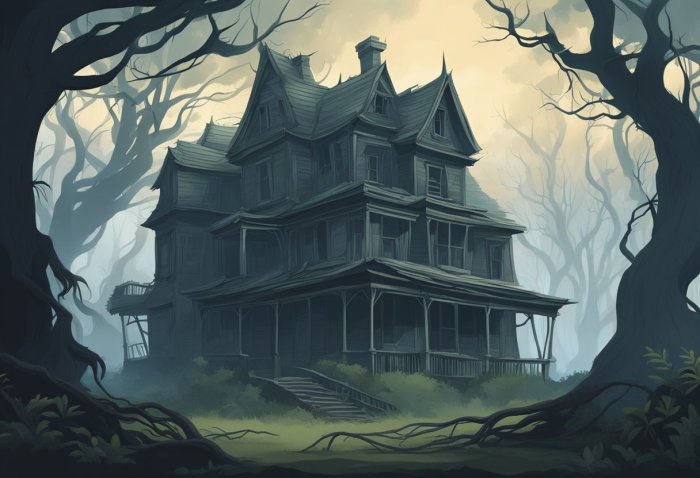
In conclusion, common horror story plot structures provide a framework for crafting compelling narratives that elicit powerful emotional responses. From the descent into madness to the terrifying unseen enemy, these structures provide a foundation for crafting narratives that captivate and terrify. By understanding these recurring themes, we gain a deeper appreciation for the artistry and ingenuity of horror storytellers.